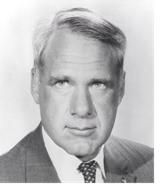- Info
A Look Back … The Landmark Schlesinger Report, 1971

- James Schlesinger
In March 1971 the White
House Office of Management and Budget (OMB) finalized a report that would have
a lasting effect on the Intelligence Community (IC). Known now by the name of
its principal author—James Schlesinger—the report was the first to examine the impact
that "technical collection" systems were having on the IC. The
Schlesinger Report had an immediate organizational impact, to be sure, but it
also caused a sea-change in thinking about ways to manage intelligence.
Technological Innovation in the 1960s
The 1960s saw rapid
technological innovation and rising intelligence costs. The use of satellites
and computers for intelligence work brought new capabilities and drove
organizational changes. By 1969, the incoming Nixon Administration, glimpsing
new challenges and opportunities for America in both fields, wondered
why the IC seemed so slow to take advantage of these developments.
The Administration
authorized a survey of the IC in late 1970, giving the job to James
Schlesinger, assistant director of OMB, who worked with Henry Kissinger's
National Security Council staff on the project. Their March 1971 report
described a Community adapting haphazardly to change.
The Schlesinger Report
As might be expected
with a budget official in charge of the survey, the resulting report took a
hard look at resources. The Schlesinger Report noted two "disturbing
phenomena":
- the cost of intelligence had exploded over
the last decade with "spectacular increases in collection
activities," but
- the IC had failed to achieve "a
commensurate improvement in the scope and overall quantity of intelligence
products."
Improved collection
technologies—satellite photography, telemetry, and electronic intelligence—had
cast doubt on the once-clear lines between "national" and
"tactical" intelligence. Uncertain of their missions, the
intelligence agencies and armed services had expanded into costly and
duplicative ventures while clinging to obsolescent collection systems.
In addition, the vast
new quantities of data had outstripped the IC’s ability to analyze them.
Analysts were not exploiting the "richness" of the new data. They had
shown little initiative in offering explanations for foreign actions, and had
demonstrated a "propensity to overlook...unpleasant possibilities."
The expense and impetus
of technological developments worsened this problem, making the collectors more
influential in their agencies than the analysts, so that collection guided
production instead of vice versa. Consumers also tended to treat intelligence
as "a free good, so that demand exceeds supply, priorities are not
established, the system becomes overloaded, and the quality of the output
suffers." The Community's inertia could not be remedied without "a
fundamental reform of [its] decision making bodies and procedures."
Report Offers Solutions
The Schlesinger Report
presented a range of options, from mild to radical degrees of centralization.
The National Security Act of 1947 had granted the Director of Central
Intelligence (DCI) authorities to remedy the "defects in central
processing, production, and dissemination" that had hampered the
government before Pearl Harbor. The Act had
not, however, anticipated the need to "plan and rationalize" the
collection of intelligence or to evaluate the quality of its product. Someone
had to manage all of these fields, both within the Defense Department and
across the IC.
The report noted that
the required Intelligence Community leader could be anything from a new
coordinator in the White House to a full-fledged "Director of National
Intelligence" controlling the budgets and personnel of the IC. The report
offered a similar range of possibilities for a manager of Defense intelligence
functions, declaring, "changes within the Department of Defense alone
could improve the allocation and management of resources and reduce the overall
size of the intelligence budget."
The Schlesinger
Report's more radical options would have required new legislation and were
controversial even within the Nixon Administration, but some of its milder
remedies were implemented. These resulted in the appointment of a deputy to the
DCI for Community Affairs and of an Assistant Secretary of Defense for Intelligence,
the merger of the service cryptologic organizations in a Central Security
Service under the National Security Agency, and the creation of the Defense
Mapping Agency and an Intelligence Community Staff to support the DCI.
James Schlesinger
himself became the ninth Director of Central Intelligence in early 1973 and
came to the job with a mandate to make these reforms work. Although he served
as DCI only a few months before President Nixon nominated him to be Secretary
of Defense, the impact of his report lived on. Indeed, every subsequent DCI was
expected to oversee the preparation of the IC’s budgets, to establish
intelligence requirements and priorities, and to ensure the quality of its
products.
Posted: Feb 28, 2008 07:08 AM
Last Updated: Mar 03, 2008 12:50 PM
Last Reviewed: Feb 28, 2008 07:08 AM

